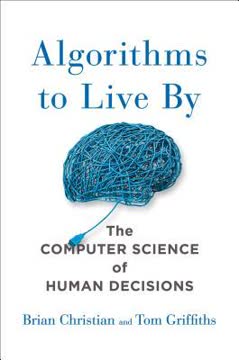Key Takeaways
1. Belief in an Invisible God: A Modern Puzzle
It ought to be difficult to believe in God.
The skeptic's challenge. In a world explained by science, where evidence is paramount, believing in an invisible being who lacks ordinary signs of existence seems illogical. Skeptics often view religious belief as a byproduct of evolved intuitions or cultural conditioning, suggesting that educated individuals should naturally be atheists. However, this perspective overlooks the complex, often struggle-filled nature of faith for many believers.
Faith in doubt's face. For many Christians, faith is not a simple acceptance but a deliberate decision to live as if certain claims are real, even when senses and reason suggest otherwise. This involves wrestling with inherent uncertainties and contradictions, a struggle acknowledged throughout Christian history, from Augustine to modern believers. Doubt is not the opposite of faith, but often its companion.
Beyond evolutionary psychology. While evolutionary psychology might explain why ideas about invisible agents seem plausible, it doesn't account for how belief is sustained amidst modern skepticism. This requires active intellectual and emotional work, a conscious commitment to a reality that transcends empirical evidence. The book explores how sensible people achieve this, not whether God exists.
2. Experiencing God Personally: The Core of Evangelical Faith
These evangelicals have sought out and cultivated concrete experiences of God’s realness.
A shift in spirituality. American evangelical Christianity, particularly in movements like the Vineyard, represents a significant shift towards an intensely personal, intimate, and supernaturally present God. This contrasts with older, more distant conceptions of the divine, emphasizing direct, felt experiences of God's presence in everyday life. Worship music, for instance, becomes a direct conversation to God, expressing deep yearning.
God as friend. This modern God is imagined not just as a sovereign or father, but as a close friend, interested in the smallest details of a worshipper's life. This intimacy is actively sought and cultivated through specific practices, moving beyond abstract belief to concrete, felt connection. It's a spirituality that embraces experiences once considered outside the mainstream.
Roots in counterculture. This experiential emphasis gained momentum from the Jesus People movement of the 1960s, where hippies embraced a countercultural Jesus – radical, loving, and supernaturally powerful. This infusion of charismatic ethos into white, middle-class Christianity made direct experiences of the Holy Spirit, like speaking in tongues or supernatural healing, more mainstream.
3. Learning to Hear God: The Skill of Discernment
You are asked to experience some of your thoughts as being more like perceptions.
Overcoming mind's privacy. A fundamental challenge is learning to override the basic human intuition that minds are private. Experiential evangelicals are taught to develop a "participatory" theory of mind, where the boundary between internal thoughts and external reality is porous, specifically regarding God's communication. They learn to identify certain thoughts, images, or sensations as originating from God, not themselves.
Prayer as listening. Prayer is framed as a two-way conversation, requiring not just talking but also listening for God's response. This listening happens internally, through spontaneous thoughts, mental images, or physical sensations. Learning to recognize God's "voice" involves interpreting these inner events as divine communication.
Discernment tests. To distinguish God's voice from one's own thoughts or other sources, believers learn informal "tests":
- Is it unexpected or spontaneous?
- Is it consistent with the Bible and God's character (loving, forgiving)?
- Is it confirmed by circumstances or others' prayers?
- Does it bring peace?
This process is a skill, refined through practice, allowing individuals to develop unique patterns of recognizing God's presence amidst inner "static."
4. Relating to God as a Person: The Power of Imagination and Play
“Jesus is the perfect playmate,” she said.
Imagining the invisible. Since God has no physical form, relating to him as a person requires imaginative effort. Churches invite congregants to "let's pretend" – to act as if God is physically present, like setting out a second cup of coffee or having "date night" with God. This practice, while self-consciously artificial, aims to make the relationship feel more real and visceral.
God as imaginary friend. Believers often describe God as being like an imaginary friend, always present for conversation, even about trivial matters like haircuts. This comparison highlights the invisible companionship and ease of interaction. However, they maintain that this relationship is real, not merely imaginary, existing in a special epistemological category.
Play makes it real. Drawing on concepts like Winnicott's "intermediate area" and Huizinga's "play frame," the book suggests that this imaginative play makes the abstract concept of God emotionally real. By treating God as a character in a "sacred romance" or a "fairy tale" (that happens to be true), believers engage with the divine in a way that transcends mere intellectual assent, blurring the line between make-believe and belief.
5. Developing the "Heart": Cultivating Emotional Connection to God
[God] looks at you and grins.
Feeling unconditionally loved. A central promise is that believers will feel God's unconditional love, transforming their inner emotional state. This is a difficult promise, as human relationships are rarely unconditional, and past hurts can create barriers. The modern evangelical God is not a judge but a source of love that heals shame and unworthiness.
Sin as separation. In this context, sin is often understood as a state of separation from God's joy and peace, rather than merely forbidden behavior. Addiction is seen as an exemplar of this separation, where people turn to destructive habits instead of God to fill an inner emptiness. God's love is the antidote to this pain.
Emotional practices. Churches employ practices that resemble psychotherapy, aiming to cultivate specific emotional responses:
- Crying in God's presence: Expressing distress while being affirmed as loved.
- Seeing from God's perspective: Reinterpreting life events from a divine, loving viewpoint (like cognitive behavioral therapy).
- Practicing love, peace, joy: Acting as if these emotions are present to make them real.
- God the therapist: Experiencing God as a perfectly attentive, non-judgmental listener.
- Reworking God the Father: Healing negative God-concepts based on difficult earthly father relationships.
These practices aim to make God's love a felt reality, transforming the believer's emotional landscape and fostering resilience.
6. Prayer as a Technology of Attention: Cultivating Inner Senses
Prayer is an unnatural activity.
Beyond content and genre. While prayer involves specific content (adoration, confession, thanksgiving, supplication - ACTS) and follows cultural genres (posture, verbal markers), it is also a technology of attention. It trains the mind to focus on internal experience (thoughts, images, sensations) and treat it as externally significant, specifically as communication from God.
Inner sense cultivation. The core technique is cultivating inner sensory experience, making mental images and other internal sensations more vivid and meaningful. This is not unique to evangelicalism but is found in ancient Christian spiritual disciplines (like Ignatian prayer) and other traditions (shamanism, Buddhism, Kabbalah).
Kataphatic vs. Apophatic. Christian tradition distinguishes two main forms:
- Apophatic (via negativa): Detaching from thought and sensation to find the unknowable God (e.g., centering prayer).
- Kataphatic (via imaginativa): Engaging the imagination and senses to dwell on God's presence and stories (e.g., Ignatian exercises, evangelical imaginative prayer).
Evangelical prayer heavily favors the kataphatic approach, using techniques like:
- Intense focus on mental imagery.
- Interaction with imagined figures (dialogue).
- Interweaving scripture with personal experience.
- Engaging all senses (seeing, hearing, feeling, smelling).
This deliberate cultivation of inner senses makes what is imagined feel more real and emotionally intense.
7. Prayer Training Changes the Mind: Absorption and Vivid Experience
It appeared that there really was something like talent, and something like training, and that both mattered to the way someone experienced God.
Prayer as a skill. Experienced pray-ers report specific mental shifts: increased focus, sharper mental imagery, and unusual sensory experiences. This suggests prayer is a skill, improved through training and potentially influenced by individual predisposition.
Absorption capacity. Psychological research using the Tellegen Absorption Scale indicates that individuals vary in their capacity for intense, focused attention and imaginative involvement. This trait correlates with:
- Deeper focus in prayer.
- More vivid sensory experiences in prayer (images, sensations).
- Experiencing God as a person.
Training effects. Experimental studies (like the Spiritual Disciplines Project) show that specific prayer training, particularly kataphatic (imaginative) practices, can:
- Increase subjective and objective measures of mental imagery vividness.
- Increase the likelihood of reporting sensory overrides (hearing voices, seeing visions).
Proclivity and practice. Both an individual's natural capacity for absorption and consistent prayer practice contribute to the likelihood and intensity of experiencing God in vivid, sensory ways. This suggests that while some may be naturally more inclined, training can enhance these experiences for many.
8. Sensory Overrides: Experiencing the Immaterial (Not Madness)
Of course it is happening inside your head, Harry, but why on earth should that mean that it is not real?
Beyond psychosis. Hearing voices or seeing things not materially present is often associated with mental illness (psychosis). However, the sensory overrides reported by evangelicals differ significantly:
- They are rare and brief, not frequent or extended.
- They are startling but not distressing, unlike the often horrific voices in psychosis.
- They are not typically commanding or accompanied by delusions.
- Believers are often aware of the potential for misinterpretation and distinguish these from psychosis.
Common in the population. Studies like the Sidgwick Census and the NIMH Epidemiologic Catchment Area Study show that non-distressing sensory overrides are surprisingly common in the general population (10-15%), not just among the religious. Prompting with examples increases reported rates significantly.
Reality monitoring. Psychologists suggest these experiences result from the brain's reality monitoring system, which distinguishes internal thoughts from external perceptions. Absorption and prayer training may influence this system, making imagined experiences more vivid and occasionally interpreted as external, especially when combined with expectation and emotion.
Historical context. Throughout Christian history, figures from Augustine to modern visionaries have reported sensory experiences of the divine. These accounts often share the pattern of being rare, brief, and meaningful, serving as powerful confirmations of faith, distinct from the chronic, distressing hallucinations of psychosis.
9. The Paradox of Suffering: How Prayer Failure Strengthens Faith
God is real, no matter how you feel.
The problem of evil. A core challenge to faith is reconciling a powerful, loving God with suffering. Traditional theological explanations (theodicy) often fall short. Evangelicalism often handles this by shifting focus from explanation to relationship and resilience.
Prayer failure's role. Specific, concrete prayer requests (for jobs, healing, etc.) often fail, creating cognitive dissonance. Instead of abandoning faith, believers reinterpret these failures:
- God gives what's needed, not wanted.
- God's answer is "no" or "wait."
- Failure is a test to build dependence on God.
This reinterpretation turns disappointment into a lesson in "spiritual maturity," shifting focus from receiving "stuff" to deepening intimacy with God.
Dryness and community. Periods of "dryness" or perceived absence of God are inevitable. These moments of emotional disconnection are managed by relying on the faith community for support and seeing God's presence in others when personal experience is lacking. Community acts as a crucial buffer against doubt and despair.
God's presence in extremis. While explanations for suffering are rejected, moments of intense pain can paradoxically lead to powerful, sometimes sensory, experiences of God's presence.
[ERROR: Incomplete response]
Last updated:
Review Summary
When God Talks Back explores how American evangelicals cultivate personal relationships with God through prayer practices and imagination. Luhrmann spent years studying Vineyard churches, examining how believers come to experience God as real and present. While some reviewers found the book insightful and empathetic, others felt it oversimplified evangelicalism. The author's anthropological approach offers a unique perspective on faith, blending psychological analysis with cultural observations. Many readers, both religious and secular, praised Luhrmann's non-judgmental tone and her ability to bridge the gap between belief and skepticism.
Similar Books







Download PDF
Download EPUB
.epub digital book format is ideal for reading ebooks on phones, tablets, and e-readers.




